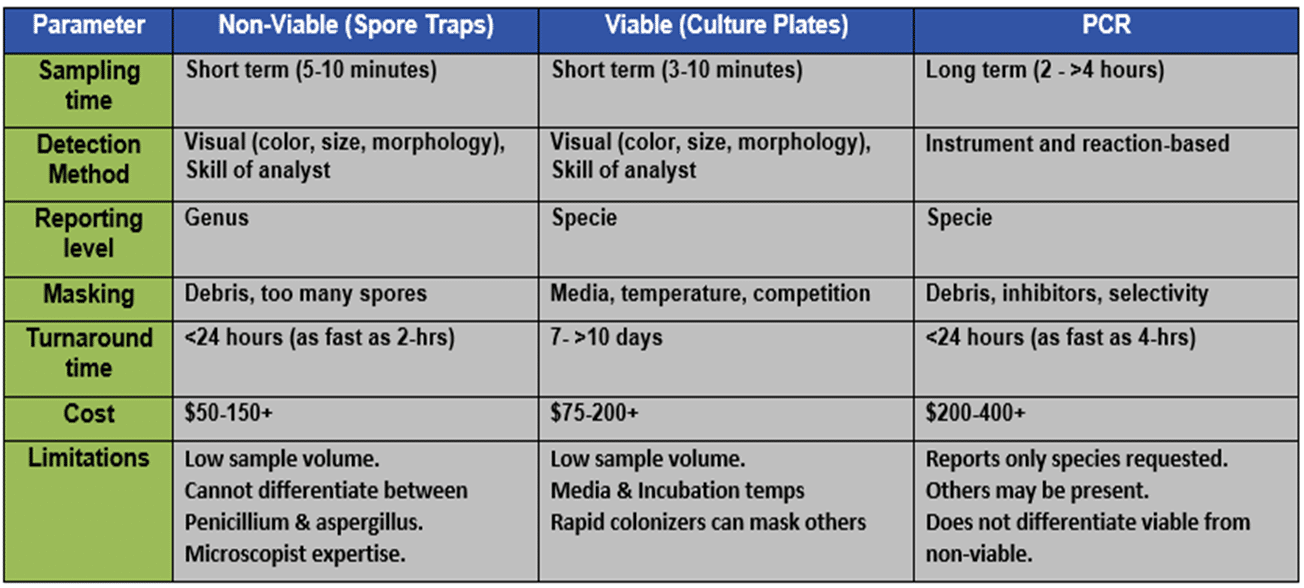Sampling for Mold in Healthcare Settings
Mold in healthcare settings can pose significant health risks and liability issues. Along with an effective mold and moisture management program, consulting with an environmental health consultant to assist in evaluations will help achieve a safe environment for patients, staff, and visitors.
This article outlines key standards and guidelines, the fundamentals of mold biology, examples of health risks of mold, sampling methods, and risk management strategies.
Standards and Guidelines
Effective mold management in healthcare settings begins with understanding and adhering to established standards and guidelines. Key documents include, but are not limited to:
- APIC State-of-the-Art Report, FGI Guidelines for the Design and Construction of Hospitals and Health Care Facilities
- The Joint Commission Environment of Care Standards
- CDC Guidelines for Environmental Infection Control in Health-Care Facilities
- AIHA’s “Recognition, Evaluation, and Control of Indoor Mold” for essential insights into managing mold-related issues

Fundamental Principles of Mold Growth
Mold growth requires three essential elements: a viable mold spore, a food source, and moisture. Common food sources in healthcare settings include paper, gypsum, wood, fabric, leather, soil/plant matter, adhesives, food, and organic debris. Moisture sources can arise from plumbing failures, building envelope failures, sprinklers, runoff, rain, flooding, humidity, moisture, and steam.
Certain mold species, such as Aspergillus species, are of special concern in healthcare due to their infectious nature that may pose elevated health risks to susceptible patients.
Sampling Methods for Mold
As in all industrial hygiene, sampling strategies should always have a clearly defined purpose and objective. Random, undirected sampling is never recommended. Sampling methods vary based on the objective, whether it’s verifying the abatement of a hazard or assessing environmental conditions.
Species-level sampling is crucial in the healthcare environment, to demonstrate the presence or absence of infectious mold species. This can allow for the matching of environmental samples to patient biological samples during suspected healthcare acquired infections. Common collection methods include surface sampling, bulk sampling, and air sampling. The most common air sampling technique is the non-viable spore trap sample. However, when working in the healthcare environment, this common sampling and analytical strategy may not be sufficient in evaluating the environment. Therefore, to allow for species-level identification, sampling and analytical methods must include either viable (e.g., culture plates) or Polymerase Chain Reaction (PCR; DNA analysis). The table below compares the various sampling and analysis techniques.

Risk and Liability Management
Infection risks arise when mold spores are disturbed without effective controls, potentially reaching patients and causing serious health issues. Managing mold-related risks involves a thorough assessment and control of potential hazards. Historical cases have shown that patients have died from exposure to Aspergillus spores in hospitals, highlighting the critical need for effective risk management.
Litigation risks are also significant, as hospitals may face lawsuits even with controls in place. Therefore, it is essential to assess risk, implement control measures, and meticulously document the assessment and effectiveness of these controls. This documentation helps protect the healthcare facility in case of legal action and ensures compliance with industry standards and guidelines.
FACS Recommendations Concerning Mold in Healthcare Settings
Mold management in healthcare settings is a multifaceted challenge requiring adherence to established standards and guidelines, understanding the biology of mold growth, recognizing the health risks associated with mold exposure, and implementing effective sampling and risk management strategies.
FACS vast experience in serving the healthcare industry allows for FACS’ understanding of the complexity of the healthcare environment and sensitivity of its occupants. By selecting the right assessment strategy, maintaining thorough documentation, and partnering with an experienced environmental health consultant, healthcare facilities can mitigate the risks associated with mold and ensure a safe environment for patients, staff, and visitors. Understanding and addressing these elements are crucial for effective mold management and maintaining the overall health and safety of healthcare environments. For more information, call FACS: (888) 711-9998.